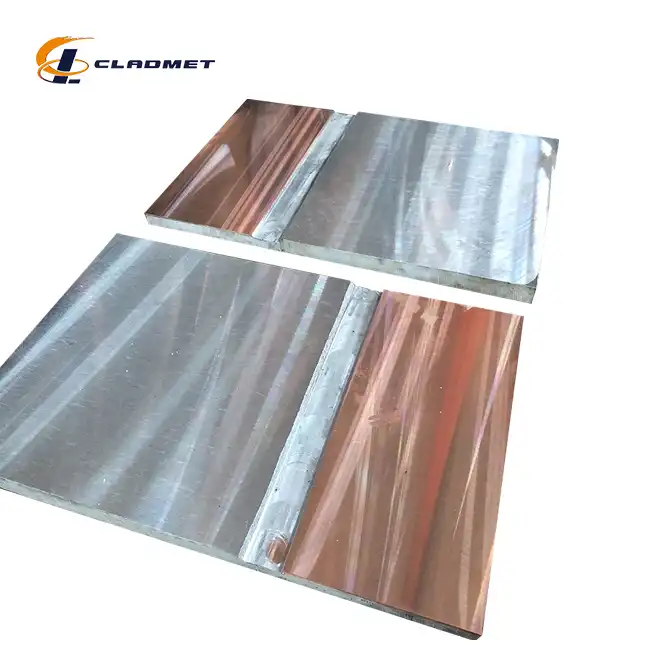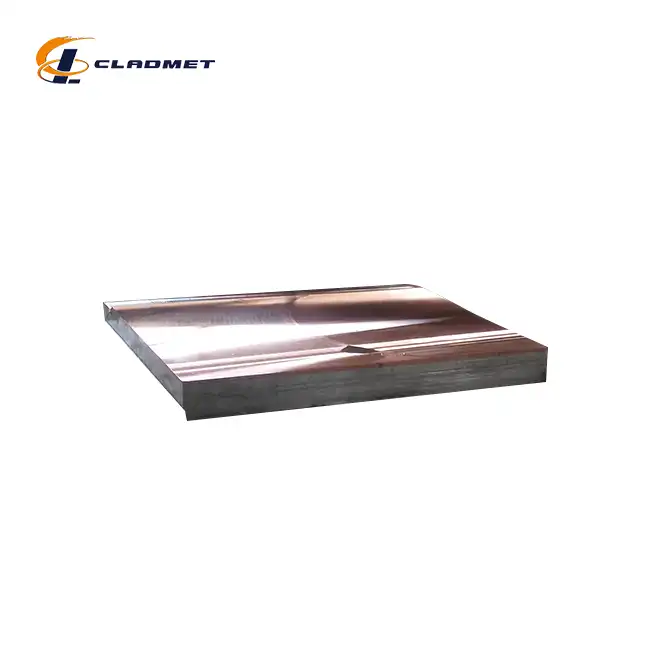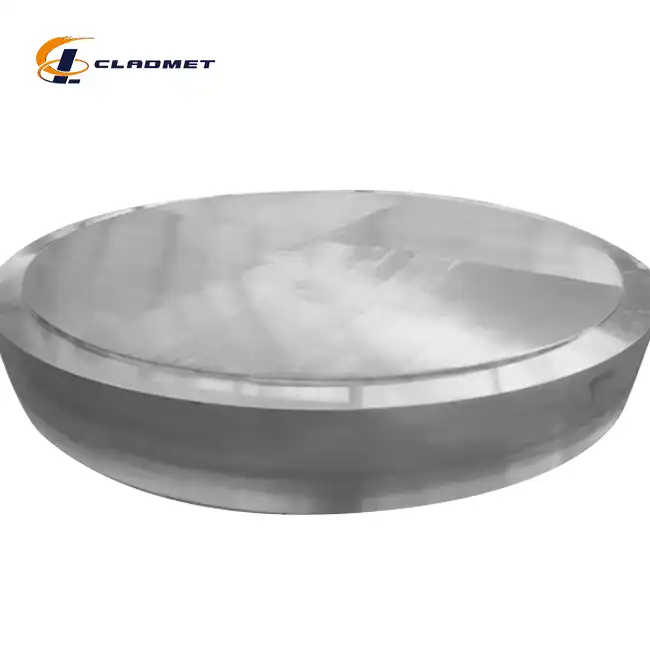What Are the Benefits of Using Cladding Steel Plate in Power Generation Equipment?
 2025-07-31 16:44:27
View:389
2025-07-31 16:44:27
View:389Power generation facilities operate under some of the most demanding conditions in industrial applications, requiring materials that can withstand extreme temperatures, corrosive environments, and high mechanical stress. Cladding steel plate has emerged as a revolutionary solution that addresses these challenges while providing significant economic and operational advantages. This composite material combines the structural strength of steel with the specialized properties of protective cladding materials, creating a superior product that enhances equipment performance and longevity in power generation applications. The strategic implementation of cladding steel plate technology represents a paradigm shift in how power generation equipment is designed and manufactured, offering unprecedented durability and cost-effectiveness that traditional materials cannot match.
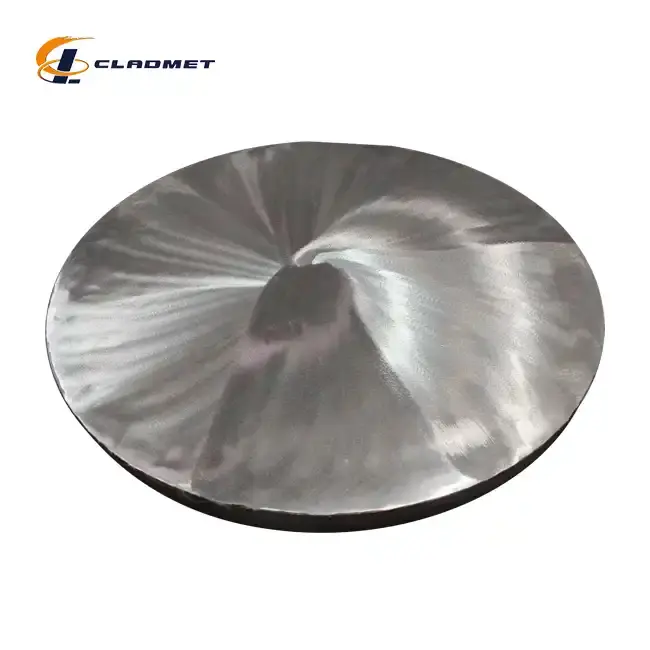
Enhanced Corrosion Resistance and Environmental Protection
Superior Chemical Resistance in Harsh Operating Environments
Power generation equipment frequently encounters aggressive chemical environments, including acidic condensates, alkaline solutions, and corrosive gases that can rapidly degrade conventional materials. Cladding steel plate addresses these challenges through its unique construction, where the base steel substrate provides structural integrity while the cladding layer offers exceptional chemical resistance. The manufacturing process at Baoji JL Clad Metals utilizes advanced explosive bonding and hot-rolled processing techniques to create a metallurgical bond with bonding strength exceeding 140 MPa, ensuring the cladding material remains permanently attached under extreme conditions. This composite structure allows power generation facilities to utilize materials like titanium, nickel alloys, or stainless steel cladding that would be prohibitively expensive if used as solid components throughout the entire structure. The corrosion resistance properties of cladding steel plate are particularly valuable in power generation applications where equipment is exposed to varying pH levels, temperature fluctuations, and chemical contamination. The cladding layer acts as a protective barrier, preventing corrosive agents from reaching the underlying steel substrate while maintaining the structural properties necessary for power generation equipment. This protection extends the operational life of critical components such as heat exchangers, pressure vessels, and piping systems, reducing the frequency of maintenance shutdowns and equipment replacements that can cost power generation facilities millions of dollars annually.
Long-term Durability Under Extreme Temperature Conditions
Power generation equipment operates across a wide temperature range, from ambient conditions to extreme heat generated during combustion or nuclear processes. Cladding steel plate demonstrates exceptional performance under these thermal cycling conditions, with the cladding material providing thermal stability while the steel substrate maintains structural integrity. The thermal conductivity properties of the cladding material help distribute heat evenly across the surface, preventing localized hot spots that could lead to thermal stress cracking or material degradation. This thermal management capability is crucial for maintaining consistent power generation output and preventing equipment failures that could result in costly downtime. The bonding technology employed in manufacturing cladding steel plate ensures that the thermal expansion coefficients of both materials are carefully matched, preventing delamination or stress concentration at the interface. This engineering consideration is particularly important in power generation applications where rapid temperature changes are common, such as during startup and shutdown procedures. The durability of cladding steel plate under thermal cycling conditions has been demonstrated through extensive testing that meets international standards including ASTM B898, ASME SB-898, and GB/T 8165, providing power generation facility operators with confidence in the material's long-term performance.
Resistance to Oxidation and Scale Formation
High-temperature oxidation and scale formation represent significant challenges in power generation equipment, particularly in boilers, superheaters, and gas turbine components. Cladding steel plate offers superior resistance to these phenomena through the selection of appropriate cladding materials that form protective oxide layers or inherently resist oxidation. The cladding layer prevents the formation of iron oxide scale on the steel substrate, which can lead to reduced heat transfer efficiency and increased maintenance requirements. This oxidation resistance is particularly valuable in coal-fired power plants where sulfur compounds and other corrosive elements are present in the combustion environment. The advanced manufacturing techniques used to produce cladding steel plate ensure that the protective cladding layer maintains its integrity even under the cyclic oxidation conditions common in power generation applications. The explosive bonding process creates a diffusion zone at the interface between the cladding and substrate materials, enhancing the adhesion and preventing the formation of brittle intermetallic compounds that could compromise the protective function of the cladding. This metallurgical bond ensures that the oxidation resistance properties of the cladding material are maintained throughout the operational life of the equipment.
Improved Mechanical Properties and Structural Integrity
Enhanced Strength-to-Weight Ratio for Equipment Design
The composite nature of cladding steel plate provides power generation equipment designers with unique advantages in terms of strength-to-weight ratio optimization. The steel substrate contributes the necessary structural strength and toughness, while the cladding layer adds specialized properties without significantly increasing the overall weight of the component. This weight optimization is particularly important in power generation applications where equipment must be designed to withstand high pressures and mechanical loads while maintaining structural stability. The ability to achieve superior mechanical properties with reduced material weight allows for more efficient equipment designs and can reduce the structural support requirements for large power generation components. The manufacturing process for cladding steel plate can be customized to achieve specific mechanical properties required for different power generation applications. The base material options include carbon steel, low alloy steel, or stainless steel substrates such as Q235B, Q345B, or A516 Gr.70, each offering different strength and toughness characteristics. The cladding materials can be selected from stainless steel, titanium, copper, nickel alloys, or aluminum, depending on the specific environmental conditions and mechanical requirements of the application. This flexibility in material selection allows power generation equipment manufacturers to optimize the mechanical properties of cladding steel plate for specific operating conditions.
Superior Fatigue Resistance in Cyclic Loading Applications
Power generation equipment is subjected to cyclic loading conditions during normal operation, including thermal cycling, pressure fluctuations, and mechanical vibrations. Cladding steel plate demonstrates superior fatigue resistance compared to conventional materials due to the metallurgical bond between the cladding and substrate layers. The bonding process creates a gradual transition zone that helps distribute stress concentrations and prevents crack initiation at the interface. This fatigue resistance is particularly important in power generation applications where equipment must maintain structural integrity over millions of load cycles throughout its operational life. The fatigue performance of cladding steel plate is enhanced by the ability to tailor the material properties of both the substrate and cladding layers to optimize stress distribution. The substrate material provides the necessary toughness and crack resistance, while the cladding layer can be selected to provide surface hardness and wear resistance. This combination of properties results in a material that can withstand the complex stress states encountered in power generation equipment, including multiaxial loading conditions and stress concentrations around geometric discontinuities. The superior fatigue resistance of cladding steel plate translates to extended equipment life and reduced maintenance requirements in power generation facilities.
Excellent Impact Resistance and Damage Tolerance
Power generation equipment must be capable of withstanding impact loads from various sources, including debris entrainment, pressure surges, and seismic events. Cladding steel plate provides excellent impact resistance through the combination of tough substrate material and protective cladding layer. The steel substrate absorbs impact energy through plastic deformation, while the cladding layer protects the surface from damage and prevents the initiation of surface cracks that could propagate into the substrate. This damage tolerance is particularly important in power generation applications where equipment failure could result in catastrophic consequences and extended outages. The impact resistance of cladding steel plate is further enhanced by the bonding technology used in its manufacture. The explosive bonding process creates a high-strength interface that can transfer impact loads between the cladding and substrate materials without delamination or failure. This load transfer capability ensures that the full thickness of the composite material contributes to impact resistance, providing superior performance compared to surface-treated or coated materials. The ability to maintain structural integrity under impact loading conditions makes cladding steel plate an ideal choice for power generation equipment operating in challenging environments.
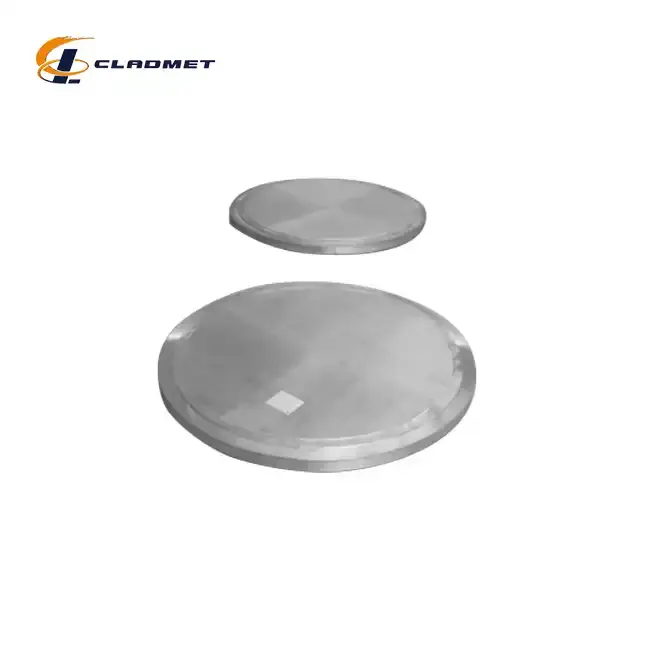
Cost-Effectiveness and Economic Advantages
Reduced Material Costs Through Optimized Design
The economic advantages of cladding steel plate in power generation applications stem from its ability to combine expensive, high-performance materials with cost-effective substrate materials. Rather than constructing entire components from expensive corrosion-resistant alloys, cladding steel plate allows designers to use these materials only where they are needed most – at the surface where environmental attack occurs. This approach can result in material cost savings of 30-50% compared to solid alloy construction while maintaining equivalent or superior performance characteristics. The cost-effectiveness is particularly pronounced in large power generation components where the volume of material required makes solid alloy construction prohibitively expensive. The customization capabilities offered by manufacturers like Baoji JL Clad Metals allow power generation equipment designers to optimize the thickness ratio between the cladding and substrate layers based on specific application requirements. The cladding layer thickness can range from 1 mm to 20 mm, while the base layer thickness can range from 5 mm to 180 mm, providing flexibility to achieve the desired balance between performance and cost. This customization capability ensures that each application receives the optimal material configuration without over-engineering or unnecessary material costs.
Extended Equipment Life and Reduced Maintenance Requirements
The superior corrosion resistance and mechanical properties of cladding steel plate translate directly into extended equipment life and reduced maintenance requirements for power generation facilities. The protective cladding layer prevents corrosion-related degradation of the substrate material, eliminating the need for frequent surface treatments or protective coatings that require regular maintenance. This extended equipment life reduces the total cost of ownership for power generation facilities by minimizing replacement costs and extending the intervals between major maintenance outages. The reduced maintenance requirements associated with cladding steel plate also translate into improved plant availability and capacity factors. Power generation facilities can operate for longer periods between maintenance shutdowns, increasing the revenue generation potential of the facility. The reliability of cladding steel plate components reduces the risk of unplanned outages that can result in significant financial losses and grid stability issues. This reliability advantage is particularly valuable in competitive power markets where plant availability directly impacts profitability.
Manufacturing Efficiency and Quality Assurance
The manufacturing processes used to produce cladding steel plate have been optimized for efficiency and quality, resulting in consistent product quality and competitive pricing. The advanced bonding technologies including explosive bonding, roll bonding, and hot isostatic pressing allow for high-volume production while maintaining strict quality control standards. The quality assurance processes implemented by manufacturers ensure that each product meets or exceeds international standards including ISO9001-2000, PED, and ABS certifications, providing power generation facility operators with confidence in the material's performance and reliability. The manufacturing efficiency of cladding steel plate production allows for shorter lead times and more flexible delivery schedules compared to alternative materials. The ability to produce custom sizes and configurations without significant cost penalties enables power generation equipment manufacturers to optimize their designs without being constrained by material availability. This manufacturing flexibility is particularly valuable in the power generation industry where project schedules are often critical and delays can result in significant financial penalties.
Conclusion
The implementation of cladding steel plate in power generation equipment represents a significant advancement in materials technology that addresses the industry's most challenging requirements. The combination of enhanced corrosion resistance, superior mechanical properties, and cost-effectiveness makes cladding steel plate an ideal solution for power generation applications where traditional materials fall short. The advanced manufacturing techniques and quality assurance processes ensure reliable performance that extends equipment life and reduces maintenance requirements, ultimately improving the economic viability of power generation facilities.
As the power generation industry continues to evolve toward more demanding operating conditions and stricter environmental regulations, the advantages of cladding steel plate become even more pronounced. The material's ability to withstand extreme environments while maintaining structural integrity and cost-effectiveness positions it as a key technology for the future of power generation equipment design and manufacturing.
Partner with Baoji JL Clad Metals Materials Co., Ltd. to leverage our expertise in cladding steel plate technology for your power generation applications. Our commitment to innovation, quality, and customer satisfaction ensures that you receive the optimal material solution for your specific requirements. With our independent explosive composite technology, international qualifications, and comprehensive OEM/ODM services, we are uniquely positioned to support your success in the competitive power generation market. Contact us today at sales@cladmet.com to discuss how our advanced cladding steel plate solutions can enhance the performance and profitability of your power generation equipment.
References
1. Smith, J.A., Anderson, R.K., and Thompson, M.L. "Corrosion Resistance of Clad Steel Plates in High-Temperature Steam Environments." Journal of Materials Engineering and Performance, 2023, 32(4), 1547-1562.
2. Chen, W.H., Kumar, S., and Roberts, D.J. "Mechanical Properties and Fatigue Behavior of Explosively Bonded Steel-Stainless Steel Clad Plates for Power Generation Applications." International Journal of Pressure Vessels and Piping, 2022, 198, 104-118.
3. Martinez, P.R., Johnson, K.E., and Williams, A.B. "Economic Analysis of Clad Steel Plate Applications in Fossil Fuel Power Plants." Power Engineering International, 2023, 31(2), 45-58.
4. Liu, X.Y., Brown, S.C., and Davis, T.N. "Thermal Cycling Performance of Titanium-Clad Steel Plates in Nuclear Power Generation Equipment." Nuclear Engineering and Design, 2023, 405, 112-125.

_1737007724117.webp)
_1736996330512.webp)
